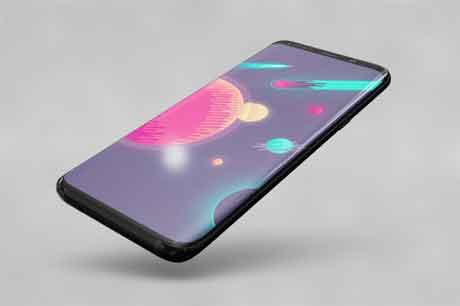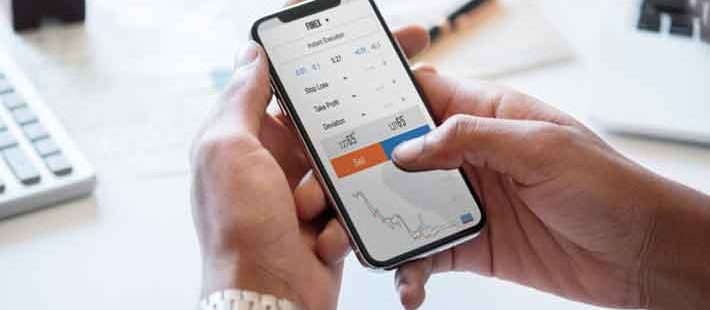One piece of technology that everyone seems to have, despite their age, is a cell phone. Cell phones have become the number one form of communication, whether literally talking on the phone, sending text messages or picture/video messages. Cell phones have become so integrated into our lives that they can do so many different things now. Some double as a digital camera, an iPod, a GPS system, and can also run multiple online applications, like Facebook. Cell phones have even been used in abductions, with police officials using the missing person’s cell phone to track their movements and saving their lives. Cell phones are also the number one headache in most people’s lives, with dropped calls and text messages that just won’t send. We’ve all been there when our car breaks down, but our cell phones don’t work (though they conveniently work when you don’t want it to, like going off during a class or in the middle of a movie). Despite these problems, people will always depend on cell phones for our basic communication.
But how exactly do cell phones work? It’s a question not many of us think about until our cell phones stop working, whether from damage or we lost our connection, rendering the contraption useless. A basic phone, found in our homes and offices uses a phone line connected to the wall (by a phone jack) that is connected to a power line, but cell phones work differently. Cell phones use towers that are in different areas of the state/region and your cell phone signal bounces off these towers. When your cell phone signal is low, that usually means that you are out of range from the towers or you are in a room or building that is made of certain materials (like concrete) that block the signal.

The history of cell phones starts back in 1832 when Samuel Morse came up with an idea for the electromagnetic telegraph, which would later be considered the first phone ever created. He created an experimental version of this invention three years later in 1835. His invention finally came to life in 1842 when Morse “laid wires between Governor’s Island and Castle Garden, New York, a distance of about a mile. Part of that circuit was under water because Morse wanted to show that an underwater cable could transmit signals as well as a copper wire suspended on poles. But before he could complete this demonstration a passing ship pulled up his cable, ending, it seemed, his experiment. However, undaunted, Morse proceeded without the cable, passing his telegraph signals through the water itself. This introduced the concept of wireless by conduction. Quite simply, Samuel Morse’s telegraph was the first device to send messages by electricity.” (Marples 2007-08)
Morse was just the beginning. Skip all the way to 1947 and the idea of a “cell phone” is born with Bell Laboratories, who worked with AT&T.; Though Bell had been working, it is Martin Cooper who is considered the official inventor of the cell phone. He had been hired by Motorola in 1954 and “…worked on developing portable products, including the first portable hand-held police radios…” (Marples, 2007-2008). Cooper had built the first prototype and set up his “base station” in New York before official testing took place with the FCC in Washington D.C. The first cell phone was called the Motorola Dyna-Tac. The phone was bulky, with twelve buttons in two rows, a speaker based at the top of the phone and a receiver at the bottom. It weighed around 2.5 pounds, took 10 hours to charge (though you could only use it for 35 minutes) and the size was 9 x 5 x 1.75 inches. This phone was formally introduced to the public on April 3, 1975 in New York City by Cooper. Cooper used the phone to call Bell Laboratories. Cooper was amazed by how the New Yorkers reacted to his invention, commenting, “As I walked down the street while talking on the phone, sophisticated New Yorkers gaped at the sight of someone actually moving around while making a phone call. Remember that in 1973, there weren’t cordless telephones or cellular phones. I made numerous calls, including one where I crossed the street while talking to a New York radio reporter – probably one of the more dangerous things I have ever done in my life.” Cooper also claimed that his invention made people want to talk to others more, saying, “People want to talk to other people – not a house, or an office, or a car. Given a choice, people will demand the freedom to communicate wherever they are, unfettered by the infamous copper wire. It is that freedom we sought to vividly demonstrate in 1973.” Although Cooper wanted to bring his cell phone to the public, it would be difficult. The price of the next Cooper cell phone, the DynaTAC, retailed for $3,500 when introduced 10 years later in 1983, which is obviously a ridiculous price for the average consumer. This was also the first phone that would be used for commercial use. It took seven more years for cell phones to really catch on, with millions of subscribers signing on in the nineties.
To put it simply, your cell phone is actually very similar to a radio. Cell phones use radio signals and towers to work. Cell phones are built with a transmitter that is used to transmit radio signals when the phone is powered on. However, this is only how your cell phone received a call, not how you and the other person use a cell phone to talk or text. To actually have a conversation with someone using a cell phone, the phone and radio signals are dependent upon something that is called a base station. The base station are transmitter towers that are smaller in size and based almost anywhere, including your own neighborhood (the massive ones you see are channel towers, which the base towers use as an anchor. The channel towers then send signals to satellites orbiting in space.) When you place a call, your signal is captured by a base tower and how close you physically are to the base tower determines your signal strength. Police can use your signal to track you if you are missing and can find almost your exact location once you dial a number because “when you dial a particular number, the base station will automatically identify that number and assign an encrypted code on its transmission.” (Carly 2009). This literally means that when you dial a number, each phone number is given a unique encrypted code that is like a tracking number. No phone number is the same and because of that, Police can track your whereabouts.

Each base station covers a small area, so when you move (even the slightest), your signal can change. This isn’t really a problem, because there are so many base stations surrounding you, that you never lose your total signal strength. If you do happen to arrive in an area that does not have at least one base station, you have entered a “dead spot”.
That is how a cell phone is used to place calls, but let’s be realistic, who actually uses their cell phone for placing calls anymore? Everyone uses text messaging! The actual title of a text message is SMS or “short message service” and cannot be longer than 160 characters (this is universal to every phone on Earth.) Text messaging is similar to placing a call, except base towers are not used exclusively. Text messaging relies on SMC, which is the Short Message Center. Essentially, you send your text message to the Short Message Center and the SME or Short Message Entity is located within every network and officially sends your message to the intended party. Not all mobile companies are this simple, however. Others use SMS GWMS (also known as the GMSC), which is the text message gateway to pass along text messages. The gateway is mainly used when texting between different networks, like using a Verizon phone to text to a T-mobile phone, look at here now. When the SMS GWMS received a text message, it “GMSC uses the SS7 network to interrogate the current position of the mobile station form the HLR, the home location register.” (Gupta 2000-2009) The HLR is basically the database individual to every network. The HLR holds the information about the person who is subscribing to the network and uses this information to pass on the text message to the correct MSC (Mobile Switching Center). The MSC “is the entity in a GSM network which does the job of switching connections between mobile stations or between mobile stations and the fixed network. ” (Gupta 2000-2009) This is the final step to sending a text message, by passing on the text from one network to the next.
The truth is that most people don’t really care how their cell phone works until it stops working. With the placement of base towers all over the place, most people don’t enter a dead zone and have their calls dropped, but when they do, that’s when they start asking questions. I hope this essay was informative so the next time our “less than dependable” networks decide to drop our calls, you can refer to this and petition to have a new base tower built in your area.
- 5 Reasons to Try ProHydrolase for Digestive Health - June 20, 2024
- SMS Verification: A Comprehensive Overview - June 10, 2024
- 4 Effective Ways to Manage Erectile Dysfunction - June 3, 2024

